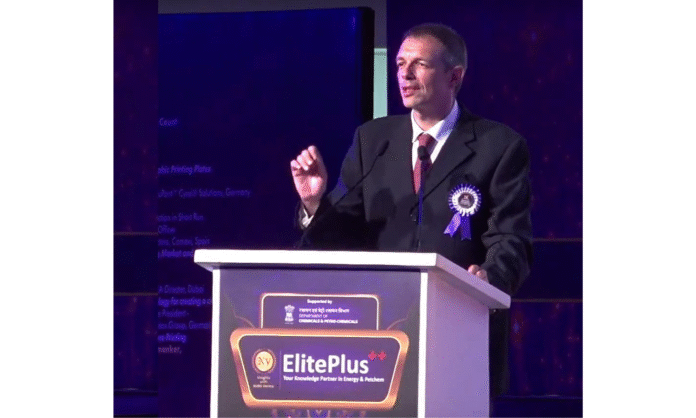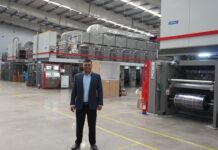
The Elite conference is unique in that it presents a wide range of innovations across the flexible packaging supply chain and methodologies. The innovations vary between those that are already in practice amongst early adopters but tracking slowly, and those that seem to offer an automated solution to innovations such as extended color gamut (ECG) that relies on a fixed set of printing inks that can achieve the majority of special and Pantone spot colors needed by most brands for their flexible packaging.
Even in CI flexo, where registration is relatively easier due to the use of a central impression cylinder, ECG has not gained much traction, despite its obvious efficiency advantages, as convincingly pointed out by Steve Smith of Miraclon at this year’s conference. It does require a strong dose of standardization and perhaps a change in mindset, as he indicated. Thus, even on CI flexo, extended color gamut printing remains in the realm of early adopters.
ECG in gravure, which is the preferred printing technology for flexible packaging by far in South Asia (and some would argue all of Asia), is more complex because of the registration of thin substrates moving at high speed from unit to unit. However, at the ElitePlus conference, Bobst’s Davide Garavaglia presented a new solution that uses a high level of press engineering and automation for preprogramming the inking system and machine setup on the new Bobst Gravure Master 6003 gravure press or system.

The advanced registration system of the Bobst Master RS 6003 received a Golden Cylinder award in 2022. It has been engineered to hold very tight register on both sides of the web, which is critical for all process color printing and especially for ECG to work.
A new print job is processed offline, including ink recipe creation. The job data and parameters for makeready, operation, and ink recipes are delivered to the press console through a cloud connection via Bobst Connect. The automated optimized settings imply that there is hardly any operator intervention, which is limited to cylinder and reel changes.
The print output is monitored with a closed-loop system that is self-correcting with a sophisticated set of algorithms for matching print quality to the required fingerprint. Garavaglia said that the Smart Gravure digitalized ECG system promises output quality, repeatability, and color consistency. He claimed the system has 35% less startup waste.
He added that the newly designed Master RS 6003 rotogravure press is the first and only Pantone-validated gravure press. The job and color matching preparation are not done on the press, but rather off-line and beforehand, to match the color target of the fingerprint, in what is described as a digitalized process.
Up to 90% of the make-ready, color recipes, and matching are done offline. The precisely mixed inks are delivered to the ink pan of each gravure print unit without any operator intervention. The press itself, apart from the most commonly used seven ECG inks, can be configured to have extra units for printing white or overprint varnishes.

The inline cameras or spectrophotometers continuously monitor the output registration and color in a closed-loop system. Color management algorithms manage the correction to optimized standards and drive the ink formulation device, which doses the press units. The production generates new color recipes that are stored in the system, and a full reel color report is generated. The system is claimed to use 60% less ink, and there are already a couple of installations of the press and technology in Europe.











